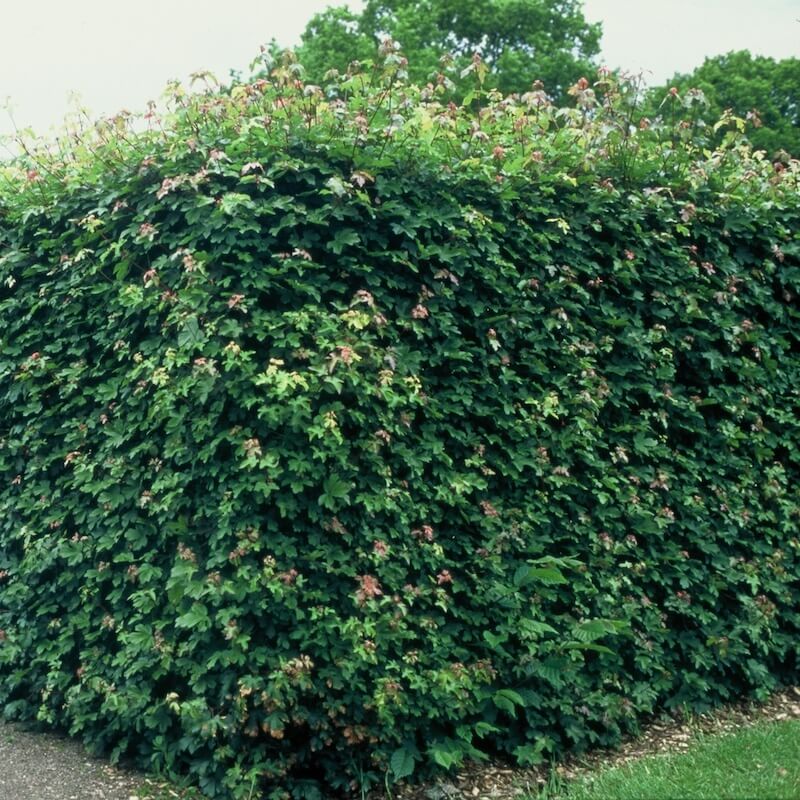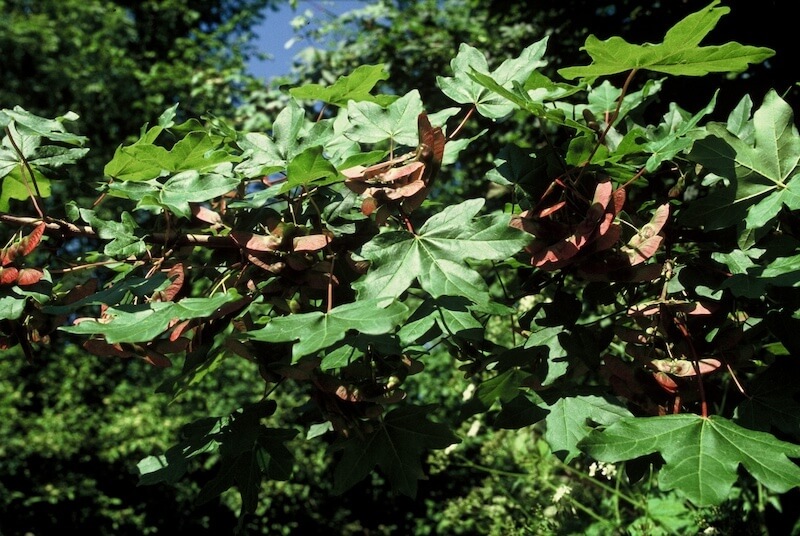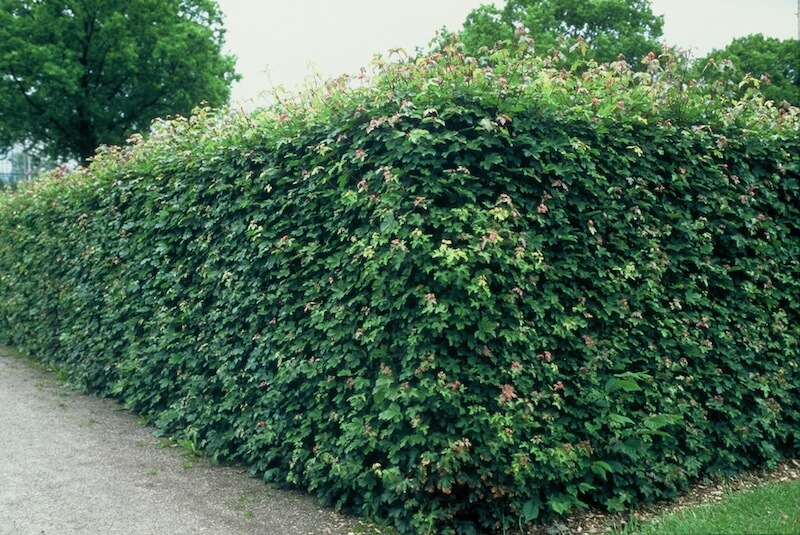
Position
- Happy in full sun or partial shade
- Suitable for hedging, woodland plantings, specimen trees in gardens, or boundary screening
- Tolerates exposed and windy positions, making it ideal for countryside and urban gardens alike
Hardiness
- Hardy to approximately –24°C (–11°F)
- Thrives across the UK, including upland and cold regions
Soil
- Adaptable to a wide range of soils, provided they are well-drained
- Fares well on clay, loam, chalk, or sandy soils
- Benefits from regular soil improvement with organic matter to enhance growth and drought resistance
- Avoid prolonged waterlogged positions
- Extremely flexible: grows on acid, neutral, or alkaline soils
- Not fussy—performs well so long as drainage and fertility are sufficient
- Grab a soil test kit and ensure the perfect conditions for growth
Height
- Grows to 4–6 metres (13–20 feet) tall in 5–10 years
- Can be pruned as a hedge or allowed to develop as a broad, rounded, small tree
Seasons of Interest
Additional Notes
- Withstands urban pollution and salt winds, suitable for roadside and exposed sites
- Responds well to pruning, making it excellent for hedging or topiary
- Mulch annually in spring with compost or leaf mould for best growth and moisture retention
- Generally pest and disease resistant
- Water well in the first couple of years after planting and during prolonged droughts
- Valuable as a native tree for wildlife, offering habitat and food for insects and birds
How to Cultivate Acer campestre for a Thriving Garden
If you’re seeking a low-maintenance, wildlife-friendly native tree for your garden or hedgerow, Acer campestre, the field maple, might be just what you need. This unassuming yet beautiful tree brings colour, character, and a touch of wild nature to any space.
What is Acer campestre and Why is It Special?
Acer campestre, known as the field maple, is the only native maple found in the UK. A medium-sized deciduous tree, it grows naturally across much of Europe, from southern England to Poland and Belarus, and west to Denmark. This humble tree offers more than just autumn colour—it provides food and shelter for a range of wildlife and has long been used in hedgerows, woodland planting schemes, and ornamental gardens.
Field maple is particularly prized for its corky bark, rounded, lobed leaves, and compact, bushy shape. It often appears as a shrub in light woodland or as one of the first trees to colonise open land. Its winged fruits, known as samaras, add seasonal interest and help it germinate naturally in suitable conditions.
What Does the Field Maple Look Like?
Field maple is a medium-sized tree that reaches approximately 15 metres in height at maturity. Its bark becomes corky with age, forming a rough fissure texture. The leaves are small, rounded, and have five distinct lobes, turning buttery yellow or warm orange in autumn.
The small, yellow-green flowers bloom in spring in clusters, providing nectar for early pollinators. These are followed by the distinctive winged fruits that spin as they fall, each holding a single seed. These fruits ripen in autumn and add to the tree’s ornamental value.

How to Cultivate Acer campestre in the Garden?
When it comes to cultivation, the field maple is easy-going. It prefers a sunny position but also grows well in semi-shade. You’ll get the best results in moist, well-drained soil, but this tree also tolerates drought, pollution, and compacted urban ground.
It grows well in heavy clay soils and is particularly well-suited to chalky or alkaline soils. Once trees are established, they need minimal care. Growth is fast in the early years, especially when young seedlings or saplings are planted in spring or autumn.
Is the Field Maple Suitable for Hedges?
Yes, the field maple makes a brilliant hedge. It’s often used in native hedgerow mixes for its dense foliage and tolerant nature. It responds well to pruning and forms a thick, bushy barrier that supports a variety of wildlife.
Because it’s widely planted in hedges, you’ll often see it clipped as a shrub rather than left to grow as a tree. It’s excellent for defining boundaries, reducing wind, and enhancing biodiversity, especially in combination with hawthorn, hazel, and dog rose.
How Does the Field Maple Support Wildlife?
Acer campestre plays a vital ecological role. Its flowers are a good source of nectar for bees in early spring, supporting pollinators before many other trees bloom. The leaves feed moth caterpillars, while birds eat the winged fruits in autumn and use the branches for shelter.
The bark and foliage support a wide range of invertebrates, including gall-forming insects. Since it’s tolerant of air pollution, it provides a green oasis in towns and cities, offering cover and food even in busier environments.
How Do You Sow and Germinate Field Maple Seeds?
To grow field maple from seed, collect the winged fruits in autumn when they turn brown. Store them in a cool, dry place before sowing in late winter or early spring. A short period of cold stratification helps germination.
You can also sow seeds directly into a nursery bed in autumn. They’ll germinate naturally the following spring. Keep the soil moist but not soggy, and protect young seedlings from slugs and birds. Once they’ve grown several leaves and strong buds, you can move them to their final site.
What Pests and Problems Affect Acer campestre?
While generally hardy and disease-resistant, field maple can occasionally suffer from wilt or fungal issues in very wet conditions. Galls on the leaves are usually cosmetic and caused by mites or midges.
The bark may crack in prolonged drought or frost, but established trees usually recover. The tree’s tolerant nature makes it resilient against many common problems. Keep the area around the plant weed-free during the first two years to help it thrive.
Can Field Maple Be Used for Timber or Crafts?
Although not a major commercial timber tree, Acer campestre has been used for making musical instruments and fine woodwork. The timber is pale and easy to work with, making it suitable for turnery and carving.
Due to its modest size and corky bark, it’s less valued for large-scale construction projects but is appreciated for its use in artisanal work. You might find field maple used in hand-crafted bowls, handles, or decorative inlays.
What Makes Field Maple Ideal for Urban or Wildlife Gardens?
Field maple is ideal for urban gardens thanks to its tolerance of atmospheric pollution. It’s one of the few native trees that thrive in built-up areas and along roadsides. Its manageable size makes it perfect for smaller gardens or courtyards.
In a woodland or wildlife-focused space, it adds structure and seasonal interest. It complements native species and helps establish hedgerows or natural screening. It’s a quiet yet powerful way to bring more biodiversity to your garden, while also enjoying beautiful foliage and a changing palette throughout the seasons.

From Darren’s Patch
One thing I genuinely appreciate about Acer campestre is how effortlessly it brings wildlife into the garden without demanding much fuss. Its ability to thrive in a variety of soils and urban conditions means it’s a tree I regularly recommend, whether you’re after a low-maintenance hedge or a beautiful standalone specimen. I often plant it alongside hawthorn and hazel to create natural, buzzing wildlife corridors that change with the seasons. Watching bees visit its early flowers and spotting birds shelter in its dense foliage never gets old. For me, the field maple perfectly blends garden charm with genuine ecological value, making it a reliable and rewarding choice for gardeners who want beauty and biodiversity to go hand in hand.
![]()
Key Points to Remember
- Acer campestre is the only native maple in the UK and is perfect for hedges, gardens, and woodlands
- It is a medium-sized tree with lobed leaves, corky bark, and winged fruits
- Thrives in moist, well-drained, alkaline, chalky, or even heavy clay soils
- Grows well in sunny positions but tolerates semi-shade and atmospheric pollution
- Field maple is fantastic for wildlife, supporting pollinators, birds, and insects
- Propagates easily from seed—just collect and sow in autumn or spring
- Works well as a hedge or standalone shrub, especially in native planting schemes
- Offers excellent value in urban gardens, woodlands, and hedgerows
- Once established, it requires little care and is resistant to drought and pests
- Adds vibrant autumn colour and structural beauty to any outdoor space
Acer campestre thrives in full sun or partial shade in any well-drained soil—acid, neutral or alkaline—and is hardy down to –24°C (–11°F). It will reach 4–6 m (13–20 ft) in 5–10 years, produces unvariegated green leaves which turn golden yellow in autumn, and carries small, pollinator-friendly spring flowers. Easy to grow, highly tolerant of wind and urban conditions, and suitable for hedging or specimen planting, it requires only occasional watering during droughts and minimal maintenance to provide years of interest in UK gardens.
Want to learn about other ornamental tree varieties? Read about Acer capillipes here.
For more information on Ornamental Trees for your garden, please click here.
Frequently Asked Questions
Q: What is Acer campestre, and why is it called Field Maple?
A: Acer campestre, commonly known as Field Maple, is a medium-sized deciduous tree native to much of Europe, including Poland and Belarus. It belongs to the maple genus and is valued for its ecological benefits and ornamental qualities. The name ‘Field Maple’ refers to its familiar presence in hedgerows, woodland edges, and open fields. This native maple tolerates a wide range of soil types, from chalky to heavy clay, and thrives in moist, well-drained soils. Its winged fruits and yellow-green foliage add to its charm, making it a popular plant for gardens and natural hedges.
Q: What are the ideal cultivation conditions for Field Maple (Acer campestre)?
A: Field Maple thrives best in well-drained soil with a preference for moist but not waterlogged conditions. It tolerates a wide range of soils, including chalky and heavy clay soils. This native maple grows well in semi-shade or sunny positions, often establishing under oak trees. It is hardy and tolerates strong winds, although it does not favour maritime exposure. When cultivating Acer Campestre, sow seeds in spring, ensuring good germination by keeping the soil moist. Regular feeding during the growing season supports healthy growth, especially in garden or hedge settings.
Q: How does Acer campestre support wildlife and the environment?
A: Acer campestre plays an important ecological role in woodland and hedgerow habitats. It is one of the first trees to colonise open ground, helping stabilise soil and create shelter for wildlife. Its flowers provide nectar for bees, making it a beneficial tree for bees. The dense foliage provides nesting sites for birds, while the winged seeds (samaras) serve as food for small mammals and birds. Its corky bark and fissured wood add habitat niches for insects. Additionally, Field Maple tolerates atmospheric pollution and air pollution, making it well-suited for urban planting to improve the environment.
Q: What are common pests or diseases affecting Acer campestre, and how can they be managed?
A: Field Maple is generally hardy but can be affected by fungal wilt and gall formation, which may cause foliage damage. The presence of gall mites can lead to small swellings on leaves, which rarely harm the tree significantly. Wilt caused by fungus can be more serious, but it is uncommon if the plant is well established. To manage these issues, ensure good air circulation by avoiding overcrowding and maintaining healthy soil conditions through regular feeding. Early removal of affected leaves and pruning of diseased branches can help reduce the spread and protect the plant’s health.
Q: How do you propagate Acer campestre from seed, and what is the germination process?
A: To propagate Field Maple, collect mature winged fruits in autumn and extract the seeds. Seeds require a period of cold stratification, so sow them outdoors in moist, well-drained soil during late autumn or keep them chilled in the fridge before spring sowing. Germination typically occurs over several weeks at temperatures ranging from 15-20°C (59-68°F). Seedlings should be protected from harsh winds and direct sun initially. Regular watering and feeding will encourage healthy growth. Once established, young plants can be transplanted to their permanent location in gardens or hedges.
Q: Can Acer campestre be grown as a hedge or a standalone tree in gardens?
A: Acer campestre is versatile and can be grown both as a hedge and a medium-sized standalone tree. When planted as a hedge, it forms a dense, deciduous screen ideal for privacy and wind protection. Its growth is fast and manageable through regular pruning, which encourages bushier foliage. As a tree, Field Maple provides excellent autumn colour and can tolerate urban conditions well. Its ability to thrive in heavy clay or chalky soils makes it suitable for a variety of garden styles, from natural woodland borders to more formal planting schemes.
Q: What are the key features of Acer campestre’s bark and leaves?
A: The bark of Acer campestre is distinctive, featuring corky ridges and fissures that develop as the tree matures, adding ornamental interest and texture. Its deciduous leaves are typically five-lobed and rounded, with a bright yellow-green colour in spring and vibrant golden hues in autumn. The foliage supports local wildlife and provides seasonal visual appeal in garden and woodland settings. This native maple’s combination of bark texture and colourful foliage makes it an attractive addition to hedgerows and natural landscapes.
Q: Where can Acer campestre (Field Maple) plants be purchased?
A: Acer campestre, or Field Maple, is widely available at garden centres and reputable online nurseries throughout the UK. Many stock native tree saplings, shrubs, and young plants are suitable for hedging or planting in gardens and woodlands. When purchasing, look for healthy, well-rooted plants or saplings with good foliage and minimal signs of disease. Buying from specialist suppliers ensures you receive cultivars suited to local climate and soil conditions. Garden centres often offer advice on cultivation and care, helping you select the right Acer Campestre for your project.
Q: Is Acer campestre suitable for planting in urban or polluted environments?
A: Yes, Acer campestre is notably tolerant of atmospheric pollution and air pollution, making it an excellent choice for urban planting schemes. It withstands city conditions better than many other native trees, coping well with dust and vehicle emissions. This resilience allows it to support urban biodiversity and improve air quality. Its adaptability to various soils, including chalky and heavy clay, as well as its tolerance of strong winds (though not maritime exposure), makes it a practical and ecological choice for parks, roadside verges, and gardens within towns and cities.
Q: How does Acer campestre contribute to timber and musical instrument making?
A: The timber of Acer campestre is valued for its hardness and fine grain, making it suitable for furniture, flooring, and smaller woodcraft projects. Its wood has also been traditionally used in making musical instruments, thanks to its acoustic properties. While the tree is more commonly appreciated for its ecological and ornamental qualities, its timber remains a useful by-product in rural and woodland areas. Sustainable management of Field Maple trees in mixed woodlands ensures a supply of quality timber while preserving their environmental benefits.
